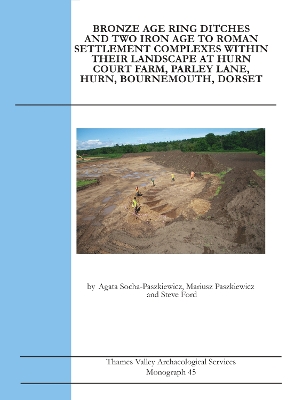Fieldwork in advance of mineral extraction revealed a range of settlement and burial deposits of Neolithic, Earlier Bronze Age, Middle Iron Age and Roman dates. A few Mesolithic flints were also found. The distinctive deposits of Bronze Age date were four ring ditches. One was fully excavated, two partially excavated and another preserved in-situ. It is uncertain if a fifth partially excavated feature was a ring ditch or a sub-circular Roman enclosure. Ephemeral traces of broadly contemporary occupation were also recorded. The main archaeological deposits were two dense settlement complexes, just 300m apart, demonstrating considerable time depth with numerous intercutting features, multi-recut linear features and reorganized boundaries. The South site commenced as a circular enclosure in the Early Iron Age (c. 5th century BC) and was the genesis of a settlement that seemed to be continuously occupied up until the early 4th century AD. The North site commenced as an area of Late Iron Age field boundaries before developing into a large settlement complex again seemingly occupied continuously without a break into mid-4th century Roman times. Although there are no physical links between the two complexes, the ?triangular? form and orientation of funnel arrangement of ditches opening on to a large undeveloped area, suggests use of common pastureland.
- ISBN13 9781911228677
- Publish Date 6 January 2023
- Publish Status Active
- Publish Country GB
- Imprint Thames Valley Archaelogical Services Ltd
- Format Paperback
- Pages 201
- Language English
